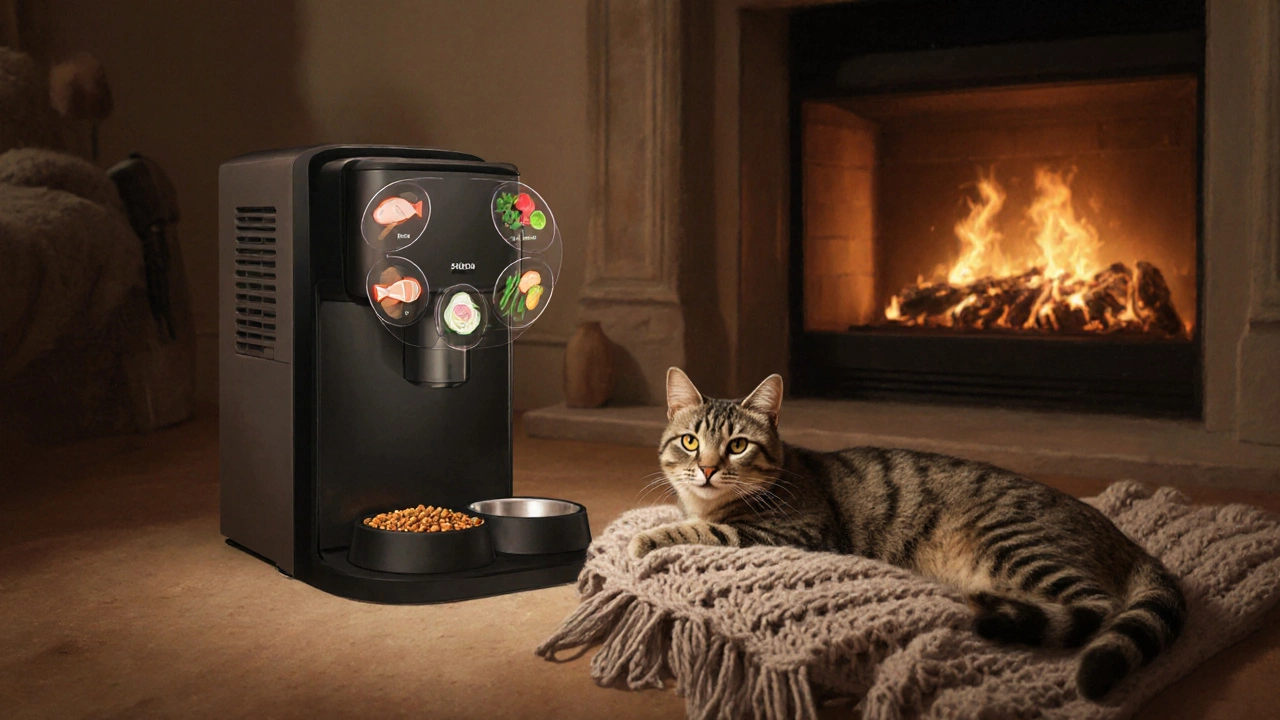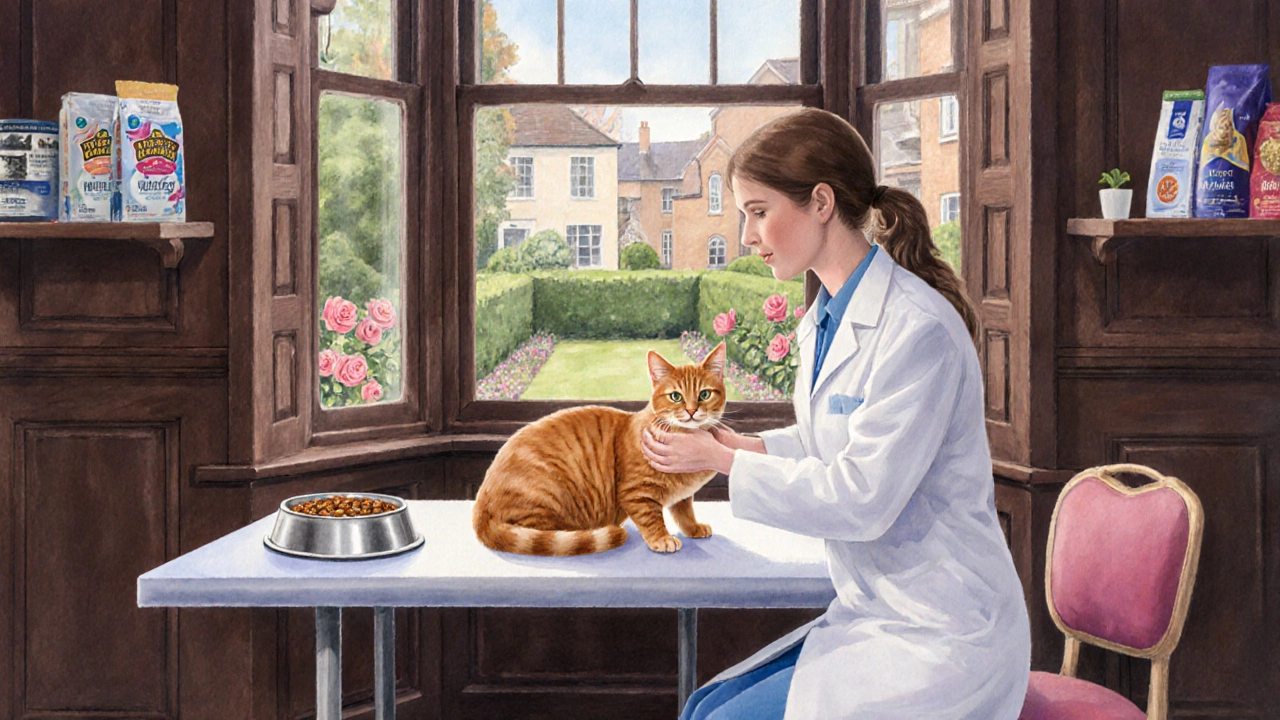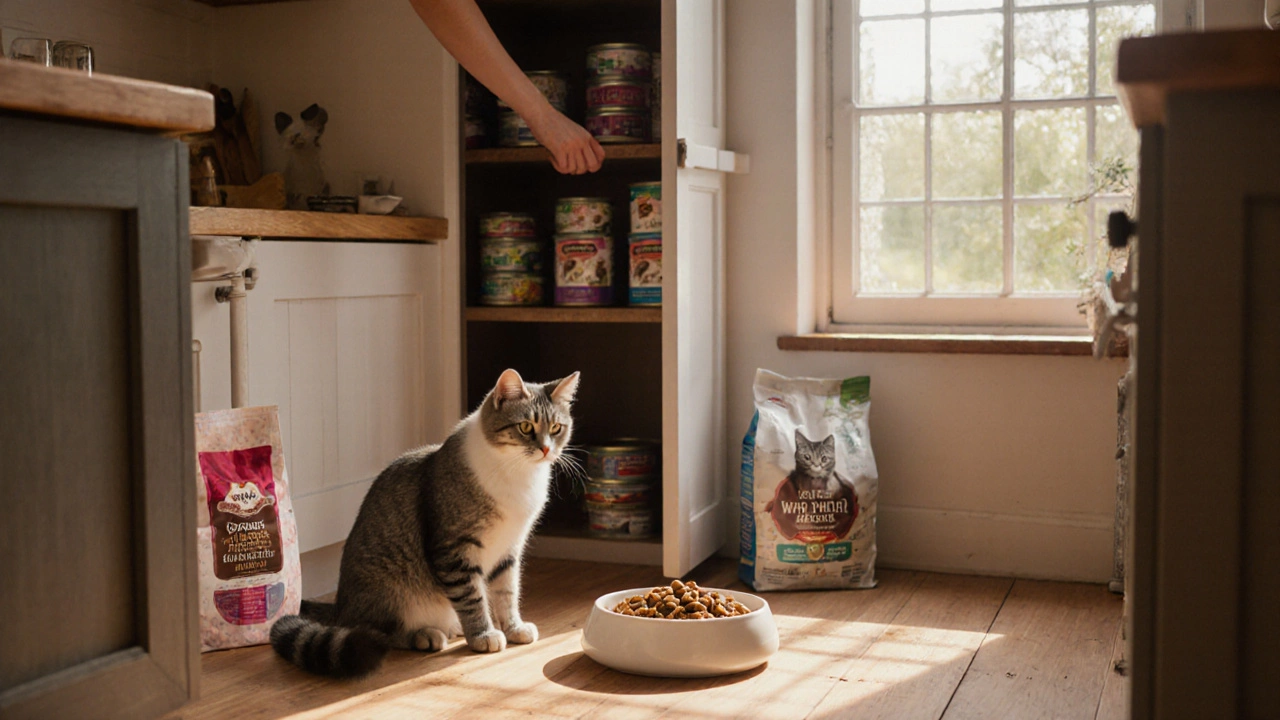Cat Protein Intake Calculator
This tool estimates the daily protein requirement for your cat based on its weight and activity level.
TL;DR
- Look for high protein (30%+), low carbs, and added taurine.
- Wet canned food beats dry kibble for hydration and palatability.
- Raw or homemade diets work if you control safety and balance.
- Choose age‑specific formulas: kitten, adult, senior.
- Read the AAFCO statement to ensure complete nutrition.
Feeding your cat isn’t just about filling a bowl. It’s a daily chance to boost immunity, keep the coat glossy, and stave off health issues like kidney disease or obesity. With endless options on the shelf, picking the best cat food can feel overwhelming. This guide breaks down what cats truly need, the main food styles on the market, and a step‑by‑step way to match a diet to your cat’s life stage and health goals.
What Cats Actually Need
Unlike dogs, cats are obligate carnivores. That means they thrive on animal protein and can’t synthesize certain nutrients from plant sources. The three core nutritional pillars are:
- Protein - at least 30% of calories, preferably from meat, poultry, or fish.
- Taurine - an amino acid essential for heart and eye health, absent in most plant proteins.
- Moisture - cats naturally get most water from prey; dry diets can leave them chronically under‑hydrated.
Vitamins A and D, arachidonic acid, and a balanced calcium‑phosphorus ratio round out a complete diet. When a commercial product meets the AAFCO (Association of American Feed Control Officials) nutrient profile, you can trust it’s nutritionally adequate.
Types of Cat Food
Every cat is different, and there’s no one‑size‑fits‑all answer. Below are the four major categories you’ll encounter.
Dry Kibble
Dry kibble is a low‑moisture, extruded product that offers convenience and long shelf life. It typically contains 30‑35% protein and 10‑12% fat. The main upside is cost‑effectiveness and dental‑scrubbing action, though the latter benefit is modest. Look for grain‑free formulas that list a named meat source first and contain added taurine.
Wet Canned Food
Wet canned food provides 70‑80% moisture, mimicking the water content of natural prey. Most wet meals contain 8‑12% moisture‑free protein, which translates to a higher protein density per calorie than dry kibble. Cats often find canned food more palatable, and it helps prevent urinary tract issues by boosting fluid intake.
Raw or Fresh‑Food Diets
Raw diet consists of uncooked meat, bone, and organs-sometimes supplemented with vitamins. When sourced from reputable suppliers, raw diets deliver 40‑50% protein, optimal taurine levels, and a natural texture. The biggest challenge is ensuring bacterial safety and achieving a balanced nutrient profile without expensive commercial mixes.
Homemade Cat Food
Cooking your own meals gives you total control over ingredients, but it requires precise formulation. A typical homemade recipe might combine boiled chicken breast, egg yolk, and a small amount of pumpkin for fiber, plus a commercial taurine supplement. Nutrient analysis (either via a lab or reliable software) is essential to avoid deficiencies.
How to Choose the Best Food for Your Cat
Follow these five decision steps to land on the right bowl content.
- Identify life stage. Kittens need 30‑35% protein and higher calories; seniors benefit from joint‑support additives like glucosamine.
- Check the ingredient list. First‑place should be a specific meat (e.g., “chicken” or “salmon”). Avoid vague “meat by‑products” and excessive fillers like corn or wheat.
- Verify micronutrients. Look for added taurine, vitamin A, and omega‑3 fatty acids (EPA/DHA). If the label mentions “complete and balanced” per AAFCO, you’re covered.
- Consider health conditions. Cats with kidney disease need low‑phosphorus, wet‑rich foods; obese cats benefit from calorie‑controlled dry blends.
- Test palatability. Offer a small amount of a new brand for three days. If the cat eats at least 80% of the portion, it’s a good fit.
When in doubt, consult your veterinarian, especially before switching to raw or homemade diets.

Sample Feeding Guide
Below is a quick reference for a 10‑lb adult cat with normal activity levels. Adjust portions by 10‑20% for weight management or active outdoor cats.
- Dry kibble: ¼ cup (≈30g)≈75kcal.
- Wet canned: ½ can (≈85g)≈90kcal.
- Raw: 2oz (≈55g) of muscle meat≈80kcal.
- Homemade: 3oz cooked chicken + ¼egg yolk + 1tsp pumpkin≈85kcal.
Split meals into two servings daily to match a cat’s natural hunting rhythm.
Common Pitfalls & Myths
Even seasoned cat owners fall for a few misconceptions.
- “Grain‑free is always healthier.” - Grain‑free recipes can still be high in carbs from potatoes or peas. Focus on animal protein first.
- “Dry food alone prevents dental disease.” - Only specially formulated dental kibble with abrasive particles shows measurable benefit.
- “Cats can thrive on vegetarian food.” - Without synthetic taurine and adequate protein, most plant‑based diets cause retinal degeneration.
- “More food equals a happier cat.” - Overfeeding leads to obesity, diabetes, and joint strain; quality beats quantity.
Quick Comparison of Main Food Types
| Category | Moisture % | Protein (min%) | Typical Cost / lb | Convenience | Safety Considerations |
|---|---|---|---|---|---|
| Dry kibble | 10‑12 | 30‑35 | $1.20‑$2.00 | Very high (store‑stable) | Watch for low moisture; dental benefit limited |
| Wet canned | 70‑80 | 8‑12 (dry‑matter) | $1.80‑$3.00 | Medium (refrigerate after opening) | Higher price; ensure proper storage |
| Raw diet | 65‑75 | 40‑50 | $2.50‑$4.50 | Low (requires freezer storage) | Risk of bacterial contamination; must be balanced |
| Homemade | Varies (usually 70‑80) | 30‑45 (depends on recipe) | Variable (ingredient cost) | Low‑medium (prep time needed) | Requires supplementing taurine & vitamins; lab testing recommended |
Frequently Asked Questions
How much protein should my cat get daily?
Adult cats need at least 30% of their calories from animal protein. For a 10‑lb cat, that’s roughly 20-25g of protein per day, depending on activity level.
Is dry food enough for hydration?
No. Dry kibble provides only about 10% moisture, far below a cat’s natural water intake. Supplement with fresh water or add wet food to meet daily hydration needs.
Can I feed my cat a vegetarian diet?
Cats lack the ability to synthesize taurine and vitamin A from plant sources. A vegetarian diet must include synthetic supplements, and even then it’s not ideal for most felines.
What’s the best way to transition to a new food?
Mix 25% new food with 75% old food for 2‑3 days, then 50/50 for another 2‑3 days, and finally 75% new, 25% old before going 100% new. Monitor stool consistency and appetite.
Should senior cats eat the same food as adults?
Older cats benefit from lower calorie density, added joint support (glucosamine), and easily digestible protein. Look for “senior” formulas that meet these criteria.

Next Steps & Troubleshooting
If your cat refuses a new diet, try these quick fixes:
- Warm the food. Slightly heating wet food releases aroma, making it more enticing.
- Mix textures. Blend a small amount of wet with dry kibble to bridge the texture gap.
- Check the bowl. Some cats dislike metal bowls; switch to ceramic or stainless steel.
- Rule out health issues. Dental pain or gastrointestinal upset can cause picky eating-schedule a vet check if appetite stays low.
Remember, the goal isn’t just to pick a brand but to create a balanced, enjoyable eating routine that supports your cat’s long‑term wellness. With the criteria, comparison table, and feeding guide above, you’re equipped to choose the best cat food for your furry companion.
